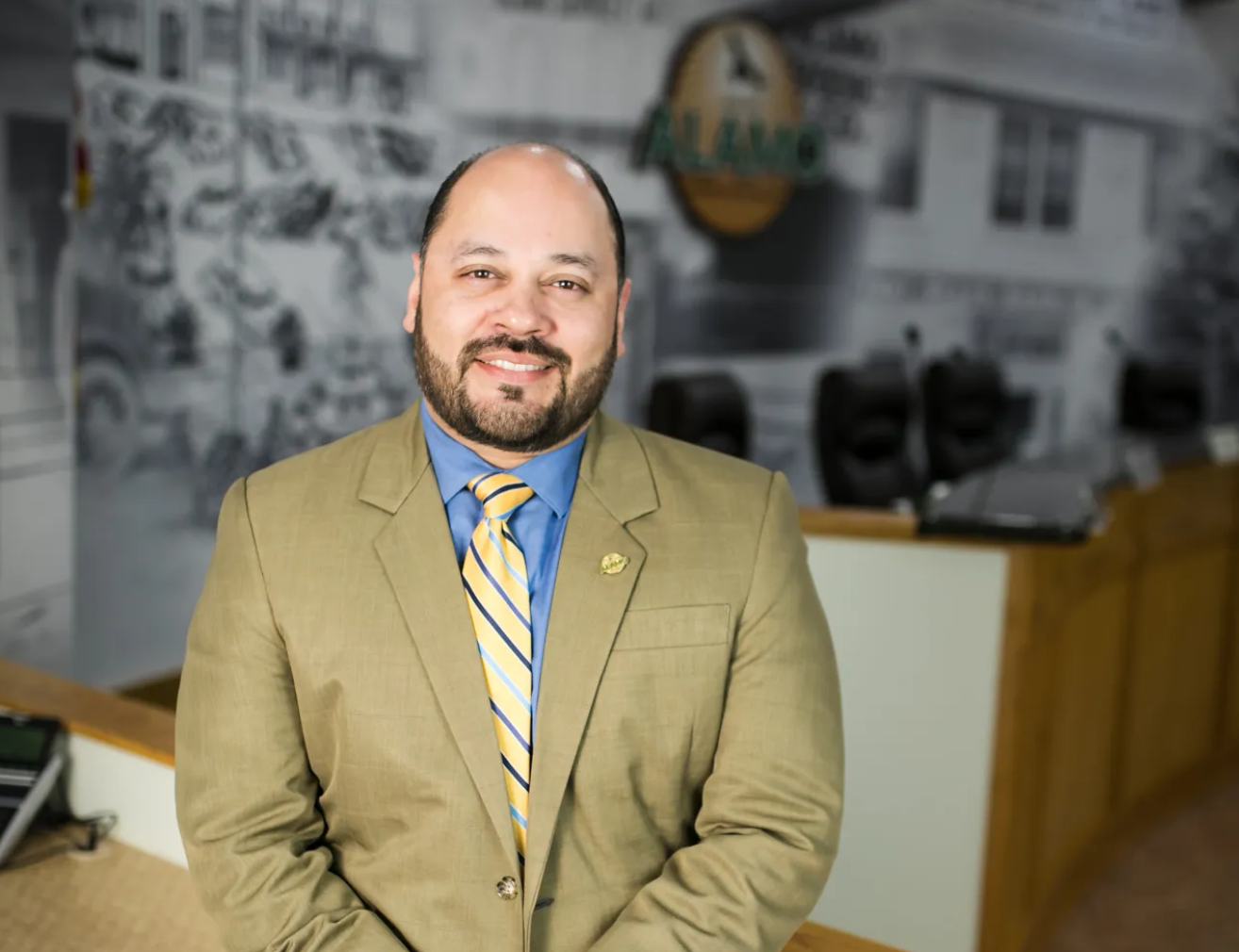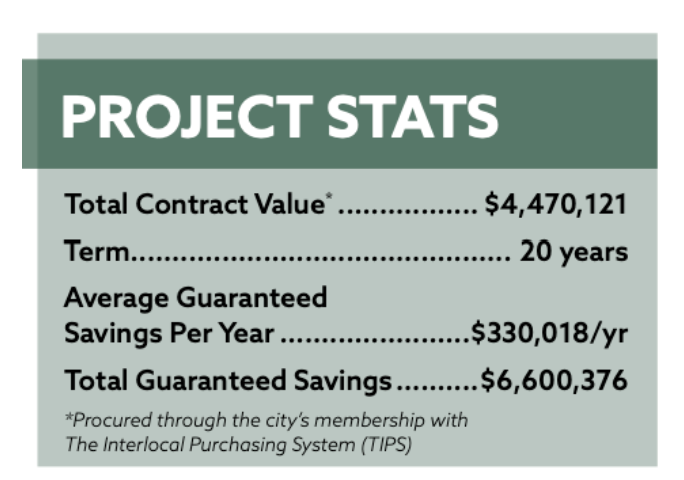The City of Alamo Funds $4.4M Infrastructure Modernization Project with Energy Savings
The City of Alamo is a humble and hard-working city in the southern region of Texas, a vibrant community situated in Hidalgo County. It is renowned for its cultural heritage and agricultural industry. In recent years, the City of Alamo has sought to set itself apart and take the right action in its support of the United Nations Sustainable Development Goals (SDGs).
Efforts to upgrade infrastructure and focus on future goals have been spearheaded by proactive leaders like City Manager Robert (Bobby) Salinas with the support of former Mayor Diana Martinez and current Mayor J.R. Garza. The City has prioritized initiatives to address aging water and sewer systems, improve transportation networks, and enhance public utilities. These upgrades are laying the foundation for sustainable growth and economic development in Alamo.
Salinas assumed the position of City Manager in June 2019. He brought a well-respected wealth of experience and dedication to his role. He has a deep understanding of urban planning, political science, and public service. Salinas previously served as the City’s Planning Director.
Known for his leadership and commitment to progress, Salinas and his team at City Hall have made modernization efforts a personal mission. His proactive approach and focus on leveraging technology to meet the evolving needs of residents reflect his dedication to fostering innovation and sustainable growth within the community. Salinas aims to position Alamo as a technologically advanced and forward-thinking municipality.
City Manager Robert (Bobby) Salinas
Energy Services Media (ESM) discussed the project with Salinas to understand its genesis and why the City chose to leverage an Energy Savings Performance Contract (ESPC) with Schneider Electric to execute an Advanced Metering Infrastructure (AMI) and lighting retrofit project.
ESM: What led the City of Alamo to pursue an infrastructure modernization project?
Salinas: One of my goals was to progress the City into considering modern technology ideas. For example, when I came on as City Manager, we did not have an online payment platform. My hope was to bring some efficiencies to our city operations and city residents with the implementation of modern technology, like paperless online bill pay and using online forms—simple things.
We received positive feedback as changes were made, so when we started to experience many issues with our water meters, I took the same approach: How can the City raise the performance standards for our residents?
We had 20+ year-old mechanical water meters out in the field. The meters did not provide accurate measurements, and we often ran into issues finding replacement parts because of how dated they were. We had water loss because they did not perform well, and residents did not have the ability to see in real-time how much water they were using. We routinely ran into issues with the pace of billing; if a technician could not physically go out into the field and read the meters, we wouldn’t be able to complete the meter reads on time. Overall, it was a significant problem faced by the City and a point of frustration for Alamo residents.
After the smart meters were installed, getting a read is literally by a touch of a button. It’s very easy, and billing is automated. I’m not getting complaints anymore.
ESM: Was the lighting upgrade part of this project’s initial scope, or was that an opportunity identified after the project started to develop?
Salinas: Our primary focus was on implementing smart water meters. The LED lighting project came about as the project developed. When we started to explore the automated water meter project, we were unaware that we could fold the lighting upgrade into the project. As we partnered with Schneider Electric, they brought to our attention that adding the lighting upgrade was possible, and the savings from the lighting upgrade would help pay for the overall project.
We saw this as very beneficial to the City, reducing the lighting utility bill and the amount of energy being used. The lighting upgrade took place at a very large sports complex that has four baseball fields. It was a win-win: the City is saving money and energy, and the sports complex now has high-performing lighting.
ESM: Were you aware of how the City would fund the project?
Salinas: As I started in my role, the City was working through how the project would be funded. Schneider Electric approached us about the prospect of executing the project with an Energy Savings Performance Contract (ESPC).
Before we committed to any project scope, Schneider Electric offered to complete an Investment Grade Audit (IGA). They looked at our infrastructure as a whole and provided a comprehensive report that included all upfront costs, energy savings, and operations and maintenance costs.
We knew exactly how much it would be and were confident in the ESPC model. I felt very confident moving forward. If the savings figures they presented and committed to were wrong, they would be responsible for paying for the difference because Schneider Electric contractually guaranteed the energy savings.
Again, it’s a win-win. It just made sense to us.



